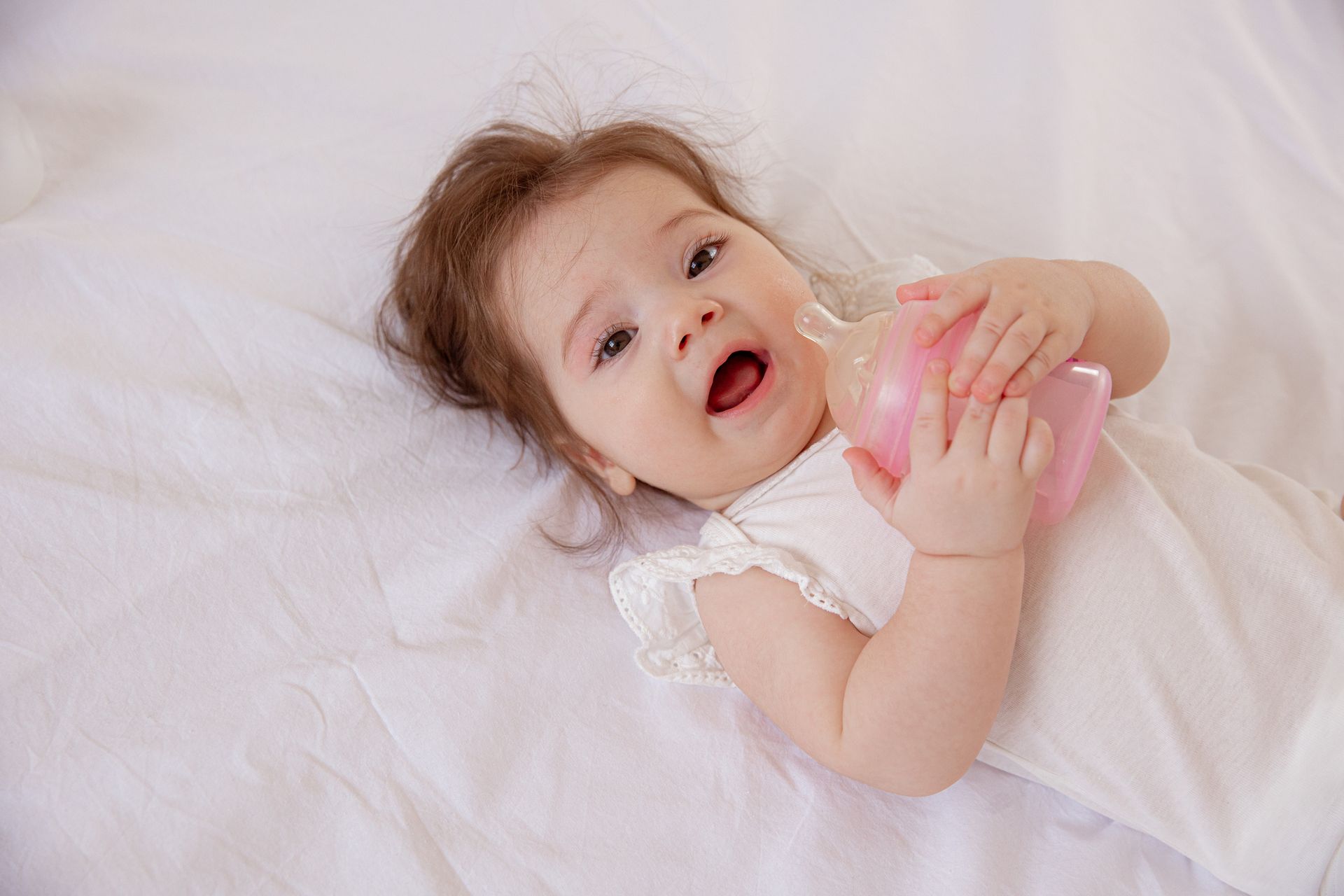Pediatric Dental Specialists
in Kodiak, Alaska
Ensure your children grow up with happy, healthy smiles to last a lifetime. Our pediatric dental care experts at Kodiak Island Family Dentistry will guide you from your child's first tooth through braces. We care for infants through age 17, providing quality dental care, comfortable accommodations, and excellent service.
- Dental Care for Infants to Teenagers
- Educated, Friendly Dental Team
- Personalized Treatment Plans
- Comprehensive Care
Call to Schedule an Appointment!
Contact Us
Specialized Pediatric Dentistry for Babies through Children 8 Years of Age
Our Pediatric Specialist, Dr. Marks, sees infants and children through the age of eight years old. He specializes in care for babies with newly erupting teeth and educates and empowers parents, so they know how to keep their babies’ teeth healthy as soon as they erupt. As your children grow, you can count on him for overall oral care including full mouth treatment and fillings.


Your Child’s First Dental Visit
Children should see the dentist as soon as their baby teeth erupt, which is typically around 6 to 12 months. Until that time, though, parents can ensure a healthy mouth by gently wiping baby’s gums with a clean, damp washcloth or infant toothbrush after bottles and meals.
Baby Bottle Tooth Decay
Baby bottle tooth decay is the occurrence of cavities and early loss of baby teeth among infants and toddlers. It’s generally caused by prolonged bottle use or putting a baby to bed with a bottle of milk or formula.


Lip & Tongue Tie
Lip tie and tongue tie are conditions that occur when your baby’s connective tissues are not aligned properly in the mouth.
A lip tie is the result of the tissue between the lip and gums (called the frenulum) being too thick or too stiff, which prevents the upper lip from moving as freely as it should.
A tongue tie occurs when the lower (lingual) frenulum is too short, too tight, or too close to the tongue tip, causing the tongue to not move properly.
Children’s Cavities
Most children’s cavities can be prevented with diligent brushing and flossing and by limiting sugary drinks and foods. They can sometimes be caused by genetics, too, so it’s best for your children to visit the dentist twice each year to ensure any cavities are caught early.

Flossing & Brushing Tips for Small Children
Routine brushing and flossing directly impact a healthy mouth and smile. The following tips can help!
Brushing Tips
- Add a pea-sized amount of paste to the toothbrush
- Brush the tops, fronts, and back sides of all teeth in a circular motion
- Remember to brush the roof of the mouth and the tongue
- Have your child spit out the paste and rinse
Flossing Tips
While traditional string floss is the most effective, many kids take more kindly to floss picks. We’ll include the steps for each type.
String Floss
- Gather about 18 inches of floss
- Wrap most of it around one finger (we recommend the pointer)
- Wind the rest around the opposite finger, but not too tightly
- Guide the floss up one side of a tooth and down the other
- Take care to reach all the way down to the gum line
- After cleaning each tooth, unwind the floss from one finger and collect it with the other
Floss Picks
- Guide the floss up and down the sides of each tooth, taking care to reach the gum line
- Rinse the floss after cleaning each tooth
- If the string begins to look worn, replace the pick with a new one to finish flossing
Specialized Pediatric Dentistry for Children 8 – 17 Years Old
Our Children’s Dentist, Dr. Christensen, sees patients 8 to 17 years old for preventive and corrective care to ensure an overall healthy mouth and smile. He provides the following services and more!
Fillings
If you have decay and need a filling, they preserve the shape and stability of teeth and allow for continued proper chewing. They also prevent further damage, decay, and tooth loss.
Pulpotomies
A pulpotomy for a child is like a root canal for an adult. The pulp in a child’s tooth can become infected via cavities or oral trauma like a chipped or cracked tooth. The procedure removes infection from a baby tooth and treats the remaining pulp with a special medication to prevent further infection. A filling or crown is then placed to seal the area where the tooth was opened.
Crowns
If your child has a tooth with a large area of decay, a crown can help keep the tooth intact and act as an alternative to an extraction.
Extractions
Kids can sometimes need to have a tooth extracted if there is an erupting permanent tooth that is keeping the baby tooth from falling out, an infection or abscess, or if a cavity is so big that there would not be enough healthy tooth left for a filling or a crown.
Teeth Whitening
Teeth whitening is generally reserved for patients 18 years of age and older. It’s always best to discuss this treatment option with your child’s dentist, but if you do plan to let your child have teeth whitening, using your dentist’s professional services is safer than opting for over-the-counter products.
Orthodontic Care for Children & Adults
Our Orthodontist, Dr. Haines, sees patients of all ages for eruptions and orthodontic consultations for teeth straightening using traditional braces as well as Invisalign® clear aligners.
Parents frequently ask us about the age when their child should see an orthodontist.
According to the American Association of Orthodontics, the recommended age is 7; however, because kids have mixed dentation—meaning they have both baby and erupting adult teeth—the age will vary. We evaluate each patient's condition individually.
Frequently Asked Questions About Pediatric Dentistry
When Should My Child First Visit the Dentist?
Children should see a pediatric dentist as soon as their first tooth appears, usually between 6 and 12 months of age. Early visits help detect potential issues, establish healthy oral care habits, and make your child comfortable with regular dental checkups as they grow.
What Should I Expect During My Child’s First Visit to a Pediatric Dentist?
During your child’s first visit to a pediatric dentist, the dentist will gently examine your child’s teeth and gums, review oral hygiene routines, and answer questions. This visit also includes tips for caring for newly erupting teeth and creating a comfortable, positive experience.
How Much Does a Child’s Dental Checkup Cost in Kodiak, AK?
The cost of a child’s dental checkup in Kodiak, AK, varies depending on the services provided, such as cleanings, X-rays, or fluoride treatments. Most routine visits range between $75 and $200, and many dental offices accept insurance or offer flexible payment options for families.
What’s the Difference Between a Pedodontist and an Orthodontist?
A pedodontist focuses on children’s dental care, including cleanings, fillings, and preventive treatments. An orthodontist, on the other hand, specializes in correcting misaligned teeth and jaws with braces or aligners. Both professionals play key roles in maintaining your child’s healthy, confident smile.
Why Do Some Children Get Cavities Even if They Brush Daily?
Even with regular brushing, children can develop cavities due to genetics, diet, or inconsistent flossing. Sugary snacks, juices, and improper brushing techniques can also contribute. Regular dental checkups and fluoride treatments help prevent decay and keep your child’s teeth strong and healthy.
Keep your child’s smile bright and healthy with professional care from Kodiak Island Family Dentistry. Contact our team at (907) 481-3567 to book an appointment.
Contact our friendly dental office to schedule your child’s appointment today!


